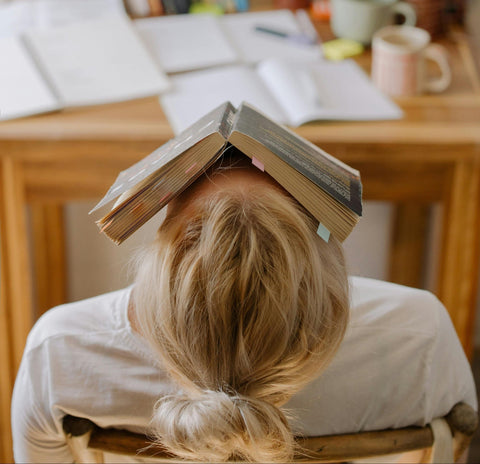With the various changes in temperature, even if we redouble our precautions, sometimes the inevitable happens and we are haunted by the dreaded chilblains. These small lesions, caused by the inflammation of small blood vessels after exposure to cold air, are usually very uncomfortable and painful, and can affect the skin of the hands and feet.
This cold-induced vascular disorder presents in the form of patches of skin, which appear swollen and reddish (or even bluish). Other possible symptoms are a burning sensation, itching, peeling and even cracking.
Since the skin is our main protective barrier against the action of external aggression agents, care must be taken daily, in order to prevent the appearance of these injuries, especially at this time of year.
Being a typical problem of winter days, chilblains normally affect the extremities of our body, as they are more prone to insufficient blood circulation.
What causes chilblains?
Low temperatures can actually affect small blood vessels near the surface of the skin. When heated, these small vessels can expand very quickly and therefore cause blood to leak into nearby tissue, resulting in swelling, something that will irritate the nerves in the affected area. The result? Pain and irritation.
Since the excessive contraction of small blood vessels (existing on the surface of the skin) is the cause of this inflammation, according to podiatrist Manuel Portela, its development “will depend on each person’s sensitivity”.
But Exposure to cold, humidity and wind is not the only risk factor for development of chilblains. According to the expert, “there are other conditions that may contribute to its appearance, such as the antecedents family members, some health problems (circulatory problems and cardiovascular diseases that may affect blood circulation) and diseases chronic conditions (such as diabetes, which affects the body's sensitivity to cold)". In addition to all this “also the sharp temperature differences, the use of very tight clothing and footwear, a low body mass index, tobacco and alcohol are risk factors”, adds.
Normally, Chilblains are temporary and disappear within two to three weeks. Still, to combat this condition, some care is necessary, such as keeping the skin in the affected areas dry, avoiding exposure to cold and heat sources.
If the symptoms worsen, you should consult a specialist, especially if you suffer from of chilblains on a recurring basis, if you do not notice improvements within two to two three weeks or if you have a fever or movement difficulties.
In the words by Manuel Portela, some people should pay extra attention to to this question: “Diabetics or patients with circulatory problems should have extra care”, he emphasizes.
How to prevent this problem?
They are There are several preventive measures to avoid the appearance of chilblains. We can start by “moisturizing your feet well”, because despite the dry skin being often associated with the hottest days of the year, “the cold also requires care in terms of skin hydration”. Manuel Portela recommends the use of moisturizing creams, specific to the affected area, also advising that exposure to cold and that sudden changes in temperature are avoided.
Others gestures that can prevent this condition are avoiding coffee and tobacco, as well as drink lots of water, eat a healthy diet, exercise and wear comfortable clothes and shoes.
How to treat chilblains?
Chilblains usually go away on their own. However, in some cases, doctors prescribe blood pressure medications so that vessels near the surface of the skin can open more easily, reducing inflammation.
By protecting our hands and feet from exposure to the cold, we will always be one step ahead of this problem. At home, what we can do is try to slowly warm the affected area by placing it under a blanket. We should avoid applying direct heat, because heating the area too quickly can worsen symptoms.
Massaging or rubbing the area are not good options, as irritation can increase significantly from there. Apply a gentle, unscented lotion to the area to keep the skin hydrated.
If you suffer from chilblains and your symptoms persist for more than three weeks, consult your doctor so that an appropriate diagnosis and treatment can be made.
How to take care of your hands during a pandemic?
The pandemic forced us to adopt new habits, namely disinfecting our hands several times a day. However, excessive use of this best friend of ours has consequences, as it has characteristics that can affect the microbiomes that reside in our tissues and that are beneficial to the body.
While this is not the only problem that comes from the compulsive use of alcohol gel, one of the most visible results is the fact that our hands become drier.
The first step to eliminating this sensation is, instead of constantly using alcohol gel, prefer, whenever possible, to wash your hands with soap and water (according to the rules published by the Directorate-General for Health, this gesture is effective when done for more than 20 seconds).
Fortunately, it is possible to follow all the hygiene measures recommended by the DGS and, at the same time, keep your hands soft and hydrated. To preserve the health and beauty of the skin in this area, remember to follow the following steps:
- Choose an alcohol gel that has glycerin in its composition (an agent that improves skin quality);
- Apply sunscreen to prevent premature aging of your hands;
- Invest in a specific moisturizing cream for your hands, to create a protective film on the skin’s surface;
- When washing your hands, use an antibacterial soap with a pH suitable for your skin, to promote the correct elimination of bacteria and viruses, without letting them dry out.














